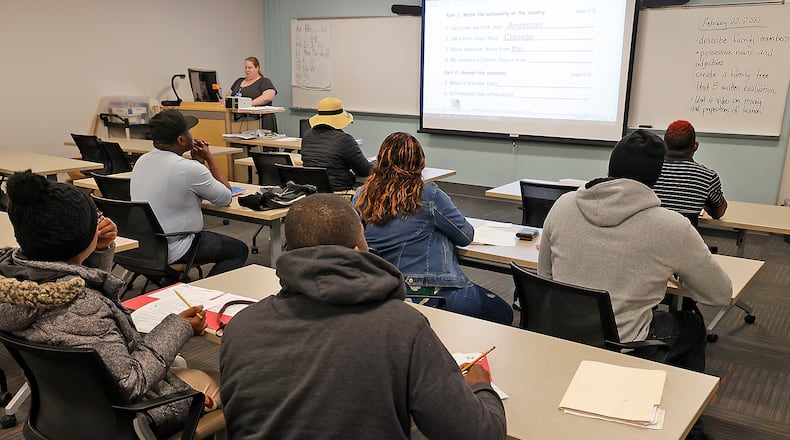“It is encouraging to start seeing signs of a recovery in the numbers of new freshmen,” said Doug Shapiro, executive director of the National Student Clearinghouse Research Center. “Although freshmen classes are still well below pre-pandemic levels, especially at community colleges, the fact that they are swinging upward in all sectors is a positive indicator for the future.”
Undergraduate enrollment was mostly stable at community colleges at 0.4% and private nonprofit four-years at -0.1% after last year’s declines of -6.7% and -1.6%, respectively.
However, enrollment declines at public, four-years were larger, dropping 1.4% while private, for-profit, four-year institutions added 5% from fall 2021.
Wittenberg University’s fall undergraduate enrollment almost remained stable, only slightly decreasing by 28 students last fall at 1,258 students compared to 1,286 in fall 2021, according to university officials.
Maribeth Stevens, Vice President for Enrollment Management at Wittenberg, said that although the last few years have resulted in both short and long term uncertainty for students and their families, which resulted in the enrollment declines across the nation, numbers are starting to stabilize.
“We are starting to see the enrollment trends begin to stabilize as students seek out college opportunities that may not have been seen as viable options during the height of the pandemic,” she said.
Clark State College’s total enrollment declined by 238 students in fall 2022 compared to 2021, at 5,154 versus 5,392, respectively, according to Dawayne Kirkman, vice president of student affairs. This includes an increase in the non-credit workforce students from 350 in 2021 to 450 in 2022.
“The past three years, Clark State has persevered through the COVID pandemic and simultaneously had to address dwindling numbers of high school graduates, as well as the rising demand for labor that are not requiring a college degree or certificate,” Kirkman said.
Kirkman noted that enrollment is up overall when including workforce students, and the college was up in continuing students (those who were enrolled the previous semester) as of the spring semester, which he said makes up half of the student body.
Although undergraduate enrollment has stabilized, postsecondary enrollment remains below pre-pandemic levels, down 1.23 million undergraduates and 1.11 million total enrollment compared to fall 2019, according to the Clearinghouse. Fall graduate enrollment also decreased by 1.2% after two consecutive years of growth at 2.4% in 2021 and 3% in 2020.
At Wittenberg, postsecondary enrollment was also still on the decline with 17 last fall and 22 in 2021, while the graduate enrollment increased by one student to 41 in 2022.
Freshman enrollment is also up by 4.3% compared to last fall, but is down 150,000 students compared to 2019, according to the Clearinghouse.
New student enrollment at Clark State remained stable, increasing by two students to 1,117 in 2022, while Wittenberg’s first-year, first-time enrollment also increased to 424 students compared to 378 in 2021.
“The growth in our incoming class this past fall is a positive indicator that students are understanding the incredible value of a liberal-arts education as they invest in their futures. It will be important for institutions to build on this momentum with a shared focus on the student experience, both inside and outside of the classroom,” Stevens said.
Freshmen enrollment increased in all sectors, but were the largest at community colleges at 6.1%.
To help with enrollment at Clark State, they are working on a new Strategic Enrollment Management Plan that will focus on 10 key areas prioritized into four tiers that will help with finding, enrolling and retaining students. This includes the enrollment process, high school connections, pre-college programs and regional locations in tier one; bachelor’s degrees, military and veterans, and nursing in tier two; manufacturing in tier three and specialized populations and short-term certificates in tier four.
“In addition, students are choosing to enter the strong job market versus higher education. Students deciding to go straight to the workforce would be considered our competition, if any. Clark State is preparing to welcome these students back in a lifelong learning model that will allow them to progress their careers and increase their earning potential,” said President Jo Alice Blondin.
About the Author

